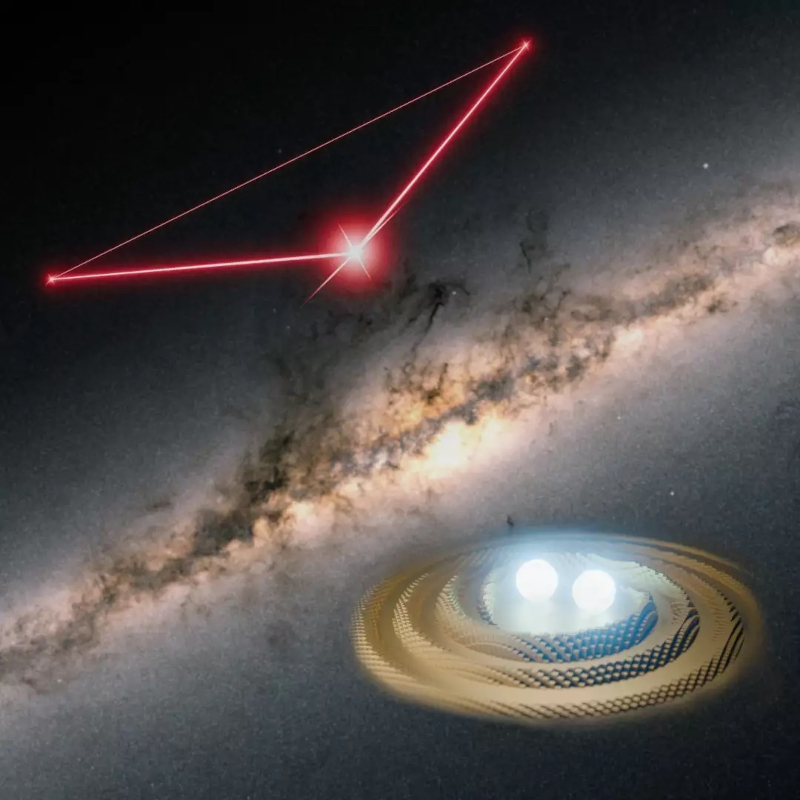
 Credit: R.Valli, MPA / background image: ESA/Gaia/DPAC
Credit: R.Valli, MPA / background image: ESA/Gaia/DPAC
LISA, adopted
The Universe is mostly studied by measuring the amount and type of electromagnetic radiation emitted by massive objects in space. In 2015, we began to view the universe in a completely new way, by detecting and studying gravitational radiation for the very first time. According to Einstein's theory of general relavtivity, gravitational waves are caused by the acceleration of massive bodies, similar to the way that electromagnetic waves are produced by the acceleration of electrically charged bodies. But gravitational waves are waves in the ocean of spacetime itself, stretching and compressing both space and time as they pass by. Although these "ripples in spacetime" are produced any time a massive object (like you) accelerates, spacetime is incredibly stiff, so only extreme accelerations of very massive bodies can produce discernible ripples that are detectable.
Existing gravitational wave detectors, like LIGO, VIRGO, and others, are enormous ground-based facilities designed to detect gravitational waves produced when small dense objects, like black holes and neutron stars left behind by core-collapse supernovae, spiral together, accelerating faster and faster, as they generate increasingly rapid fluctuations in spacetime. But black holes come in super-sizes, clocking in at millions or even billions of times the mass of the sun. How did they get so big? Gravitational radiation can provide the answer to this fundamental question by determining how often these monsters accrete either other monster black holes or the smaller variety. Mergers with supermassive black holes produce longer-wavelength gravitational radiation, a wavelength range which cannot be detected by existing ground-based facilities. The Laser Interferometer Space Antenna, or LISA, is a space-based facility consisting of three satellites flying in a triangular formation (as shown in the illustration above), and will be sensitive to these long-wavelength gravitational waves by precisely measuring the separation between the three satellites incredibly precisely over distances of 2.5 million kilometers. This long baseline makes lets LISA detect low-frequency rumbles produced by mergers of supermassive black holes in distant galaxies, along with gravitational radiation produced by accelerations of white dwarfs, neutron stars and black holes in the Milky Way. LISA has been in development for more than a decade, and a pathfinder successfully showed the feasibility of the many cutting-edge technologies needed for LISA to succeed. This year, the LISA mission passed an important review of its feasibility,
and the Science Programme Committee (SPC) of the European Space Agency has adopted LISA into its program of established future missions. This key step confirms that the development of LISA can proceed as planned, with launch of LISA planned for the mid-2030s. LISA is a collaboration between ESA and NASA, and an international LISA Consortium.
Published: February 12, 2024
<
HEA Dictionary ● Archive
● Search HEAPOW
● Other Languages
● HEAPOW on Facebook
● Download all Images
● Education ● HEAD
>

Each week the HEASARC
brings you new, exciting and beautiful images from X-ray and Gamma ray
astronomy. Check back each week and be sure to check out the HEAPOW archive!
Page Author: Dr. Michael F. Corcoran
Last modified Monday, 26-Feb-2024 17:22:06 EST


